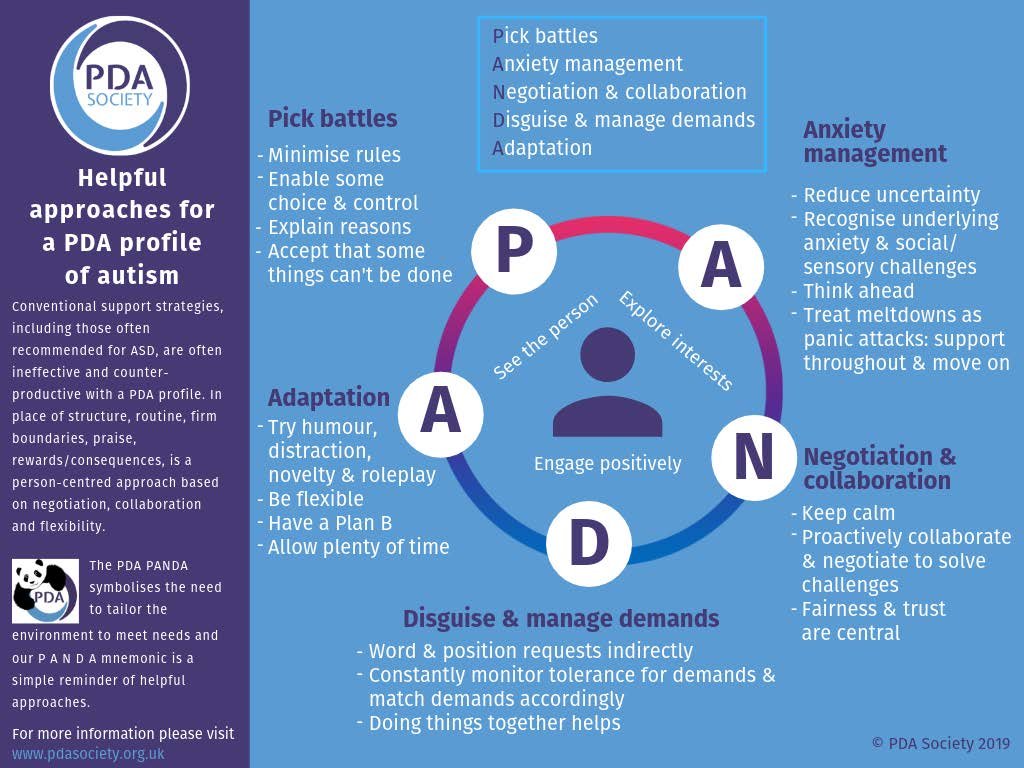
Pathological Demand Avoidance
Pathological Demand Avoidance (PDA), aka “Persistent Drive for Autonomy”, is a neurodivergent profile often associated with autism. People with PDA experience extreme anxiety and resistance when faced with demands, even seemingly “small” or “reasonable” ones. This isn't about disobedience or defiance, but a neurological difference in how demands are perceived and processed.
Individuals with PDA often possess unique strengths like intense focus on interests, creativity, and problem-solving skills. They may thrive in environments that value autonomy, flexibility, and collaboration. Understanding and accommodating these differences is key to supporting individuals with PDA to reach their full potential.
PDA isn't a disorder to be fixed, but a different way of being that deserves respect and acceptance. By embracing neurodiversity and celebrating the strengths that come with PDA, we can create a more inclusive and supportive world for everyone.
To learn more about PDA check out the resource links below :
PDA North America
PDA is an autistic profile that is finally gaining recognition in the United States. PDA children and adults avoid everyday demands and have a persistent drive for autonomy. The demand avoidance is a symptom of the need for autonomy. PDA individuals have a highly sensitive nervous system that triggers a threat response. These highly anxious individuals are frequently not recognized as being autistic and in need of understanding and support.
Over the last few years, a successful movement has started to change this. We have accomplished a great deal by providing resources, training and support to our community while focusing on spreading awareness.
We are still in the infancy of this mission as there is so much work to be done. We hope that you will find information and belonging. We are a small but mighty community and we have only just gotten started.
Welcome to the PDA movement. It's an exciting place to be.
PDA Society
Demand avoidance in PDA
With PDA, these same types of demands or situations may be avoided for the same reasons.
However, pathological demand avoidance is all-encompassing and has some unique aspects:
many everyday demands are avoided simply because they are demands. Some people explain that it’s the expectation (from someone else or yourself) which leads to a feeling of lack of control, then anxiety increases and panic can set in
in addition, there can be an ‘irrational quality’ to the avoidance – for instance, a seemingly dramatic reaction to a tiny request, or the feeling of hunger inexplicably stopping someone from being able to eat
the avoidance can vary, depending on an individual’s capacity for demands at the time, their level of anxiety, their overall health/well-being or the environment (people, places and things).
A PDA profile is also a spectrum and presents differently in different people. Some individuals may have a more externalised or active presentation – where demand avoidance may be overt, physical, aggressive or controlling. Others have more internalised or passive presentations – where demands may be resisted more quietly, anxiety is internalised and difficulties are masked. Many may have a variable presentation, depending on other factors like how well they are managing at the time, the environment, the setting, their age and so on.
PDA demand avoidance isn’t a choice and is lifelong – it’s seen in infants and remains part of the experience into old age. With understanding, helpful approaches from others and finding self-coping and coping strategies, it can become more manageable.
In this blog post Riko (a PDA adult and parent) shares their personal experience of the differences between autistic demand avoidance and pathological demand avoidance.



